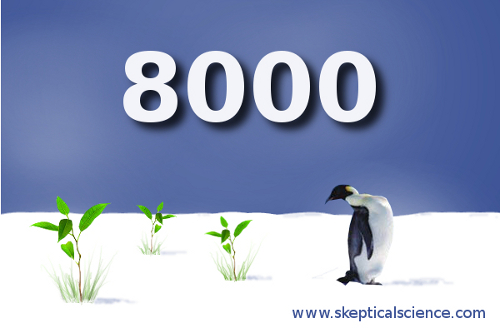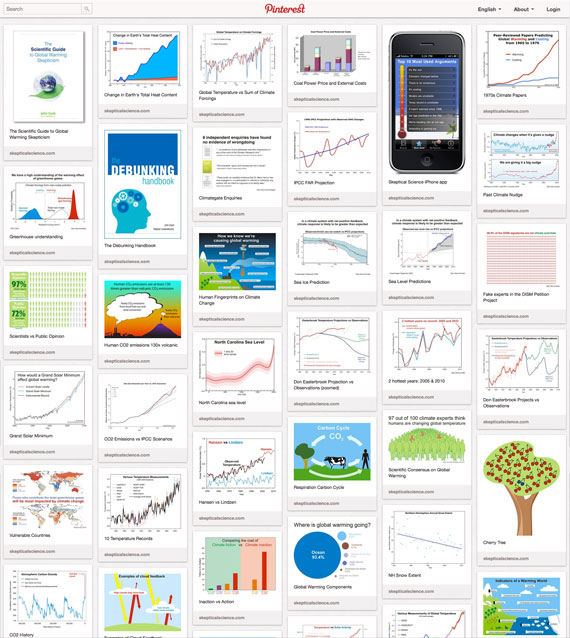Skeptical Science and social media - Ask not what SkS can do for you, but what you can do for SkS
Posted on 18 January 2013 by Anne-Marie Blackburn
 In February 2010, Skeptical Science launched its Facebook page with the aim of extending our reach. On 4 January 2012, the number of people who liked this page reached 8,000. Skeptical Science has been present on various social media for some time now and we thought it was time to promote the work we do via different channels of communication. Hopefully this will help us celebrate more milestones in the near future.
In February 2010, Skeptical Science launched its Facebook page with the aim of extending our reach. On 4 January 2012, the number of people who liked this page reached 8,000. Skeptical Science has been present on various social media for some time now and we thought it was time to promote the work we do via different channels of communication. Hopefully this will help us celebrate more milestones in the near future.
So why opt for social media when we have a blog through which we can communicate climate science? The central idea here is to increase our online presence. The Web is a hive of activity and ideas vying for people's attention. In such an environment, providing information in bite-sized chunks increases exposure to and awareness of our work. Social media also provide a less formal platform from which to reach people who prefer a more relaxed environment in which to share ideas and solutions or might feel intimidated by the science. So not only does our Facebook page include re-posts from our blog, it also links to articles from the mainstream media and includes graphics, photos and videos. Members of our community can also share their own content and get involved in discussions. In other words, Facebook is enabling us to communicate with more people and complements our blog. But the story does not end here.
Our Twitter account is also growing and now has over 5,800 followers. The strength of Twitter lies in the opportunity to take part in real-time discussions, which is particularly important when topics are trending or when events are occurring at that time. It allows us to add our voice to the debates and discussions taking place online. Our YouTube channel, which we are hoping to use more in the future, is now hosting Kevin C's excellent video showing that the human contribution to warming has carried on unabated over the past 16 years.
And our first tentative steps on Pinterest are already showing promise. Pinterest provides the perfect platform for sharing graphs, cartoons and photos which inform and provide food for thought as well as potential solutions. This is an invaluable resource in an environment where people's time is limited. The figure below shows an aggregate picture of the Skeptical Science graphics updated to Pinterest. These diverse ways of communicating our message mean we can reach more people and make our content more accessible.

Our aim is to carry on engaging with our community as much as possible. Opening up conversations is a great way for us to gather information on what matters and how we can improve climate science communication. Social media also provide a way to easily network with those whose aims are similar to ours, that is to communicate climate science, correct misrepresentations and misinformation, and find solutions to the problems facing us. Major players, such as Michael Mann, Climate Progress and Katharine Hayhoe, can be found on various social media. Non-governmental organisations (NGOs), advocacy and green groups, news providers and individuals complete the picture, linking thousands of people across continents. Tapping into this network and in turn providing support and ideas show the potential of social media in creating a global community capable of addressing global issues such as climate change.
So if you have the relevant accounts, why not join us on Facebook, Twitter, YouTube and Pinterest, and help us make Skeptical Science more prominent and relevant to our varied community?
You can also follow some of our authors/contributors on Twitter:































 Arguments
Arguments























 0
0  0
0






Comments